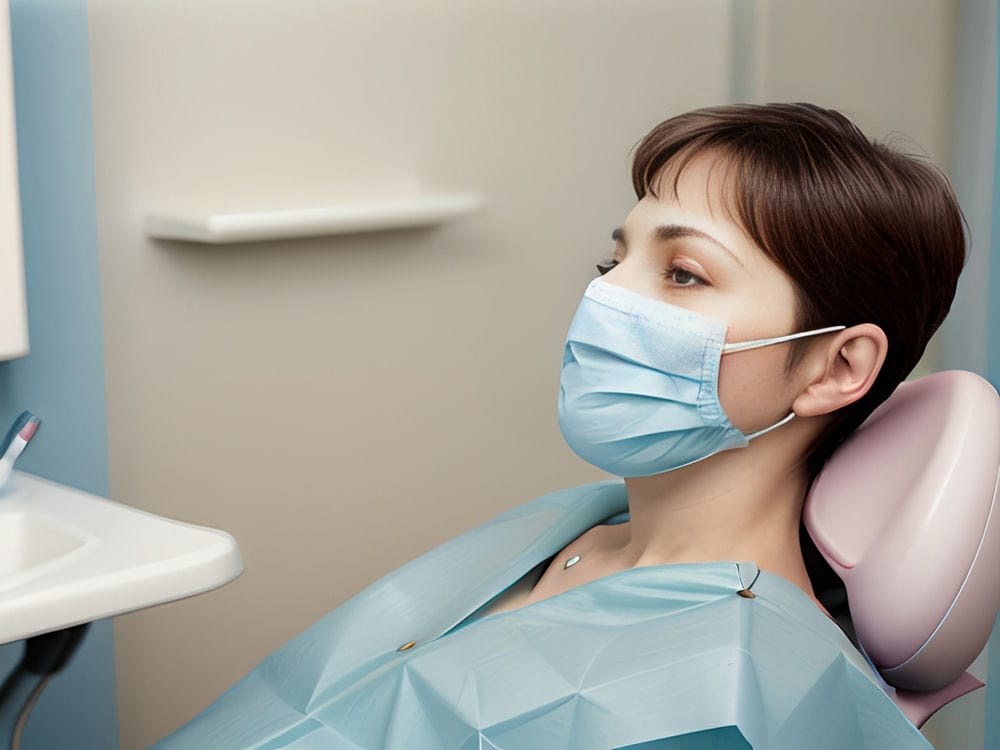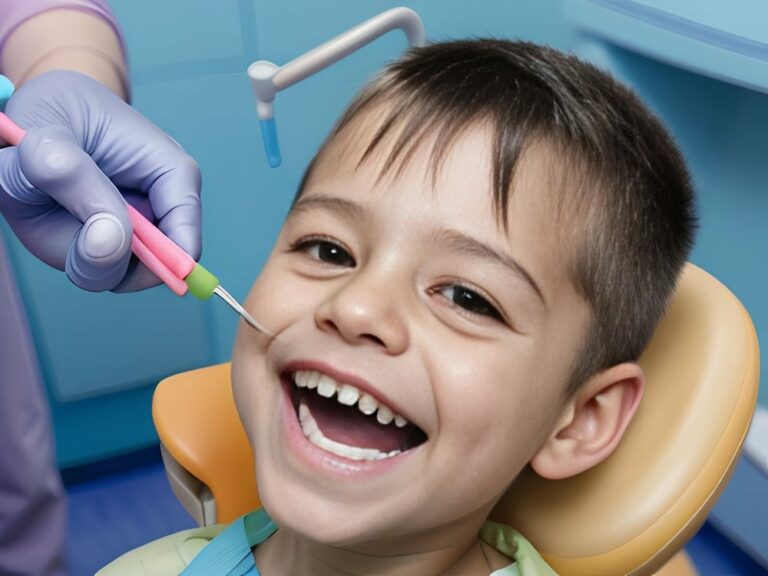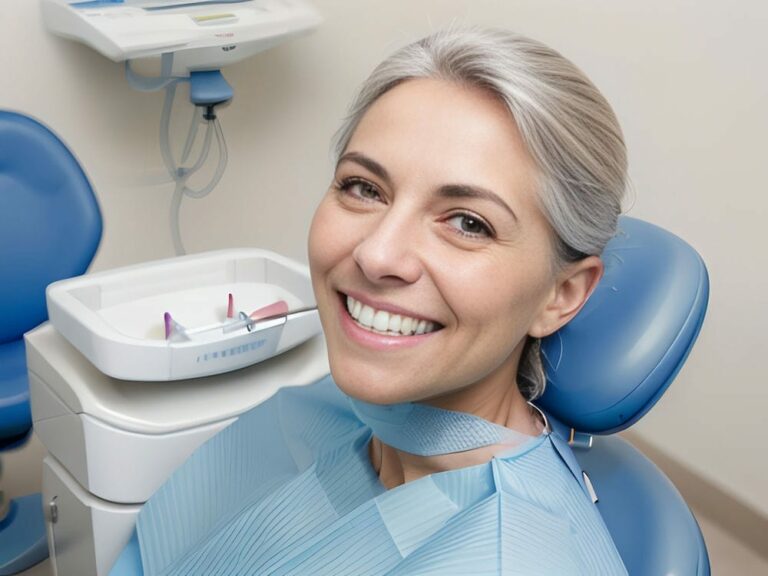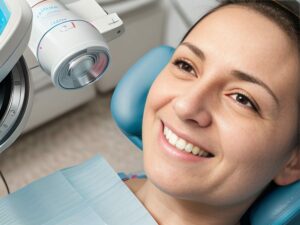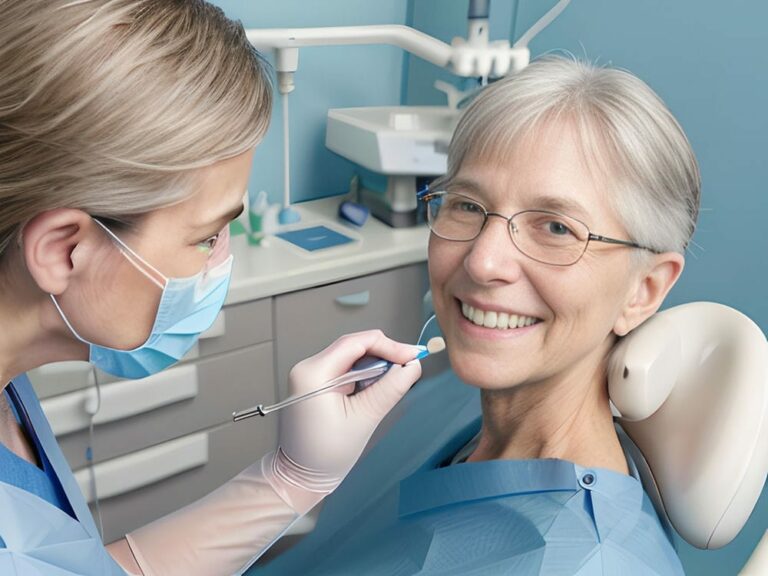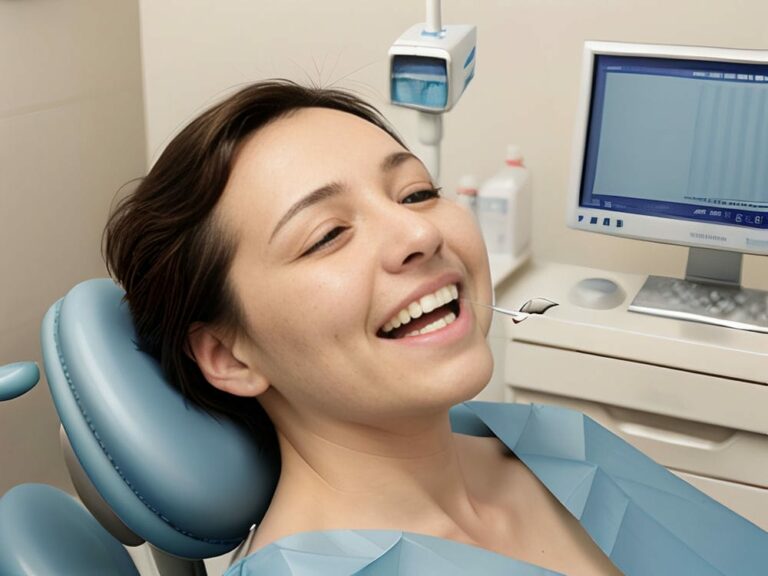The Digital Transformation of Dental Care: How CAD/CAM Technologies Revolutionize Treatment
Bad gateway.
Precision in Practice: Enhancing Dental Care with CAD/CAM Technologies
Over the past few decades, dental care has undergone a significant transformation with the introduction of Computer-Aided Design/Computer-Aided Manufacturing (CAD/CAM) technologies. These innovative tools have revolutionized the way dental treatments are planned and executed, leading to improved precision, accuracy, and customization in patient care.
One of the key advantages of CAD/CAM technologies is their ability to streamline the dental workflow. Traditionally, creating restorations like crowns or bridges required multiple appointments and weeks of waiting for fabrication in an off-site laboratory. With CAD/CAM systems, however, the entire process can be completed in a single visit. The dentist uses a digital scanner to capture precise images of the patient’s teeth, which are then used to create a virtual 3D model. This model is sent to an on-site milling machine that fabricates the restoration from a block of ceramic material. The efficiency of this workflow not only saves time for both dentists and patients but also ensures better accuracy in the final result.
In addition to improving workflow efficiency, CAD/CAM technologies also offer exceptional accuracy in dental treatments. Traditional methods relied heavily on manual measurements and subjective judgments by dentists, which could lead to variations in fit and aesthetics. With CAD/CAM systems, every step of the treatment process is digitally guided and measured, ensuring precise results that fit seamlessly with the patient’s natural teeth. The virtual 3D models created by these technologies allow for meticulous planning and design adjustments before any physical work is done on the patient’s teeth.
The customization capabilities offered by CAD/CAM technologies have transformed dental care into a highly personalized experience for patients. By using advanced software programs, dentists can create restorations that match each patient’s unique oral anatomy and aesthetic preferences. Whether it’s designing a crown that perfectly matches the color and shape of surrounding teeth or creating intricate veneers with natural-looking texture and translucency, CAD/CAM technologies enable dentists to deliver truly custom-made solutions. This level of customization not only improves the overall appearance of the restorations but also enhances the comfort and functionality for patients.
In summary, CAD/CAM technologies have revolutionized dental care by enhancing workflow efficiency, accuracy, and customization. The streamlined process allows for same-day treatments, eliminating the need for multiple appointments and weeks of waiting. The digital guidance provided by these technologies ensures precise results in terms of fit and aesthetics. Furthermore, the customization capabilities allow dentists to create restorations that are tailored to each patient’s unique oral anatomy and preferences. With CAD/CAM technologies, dental care has reached new levels of precision and personalization.
Unleashing the Power of Innovation in Dentistry: Exploring Advanced CAD/CAM Technologies
Simplification, streamlining, and integration are three key factors driving the advancement of CAD/CAM technologies in dentistry. These innovative tools have simplified and streamlined various aspects of dental care, making it more efficient and precise. Through the integration of digital scanning, virtual modeling, and on-site milling, CAD/CAM technologies have revolutionized the way dental treatments are planned and executed.
One of the significant ways in which CAD/CAM technologies simplify dental care is by eliminating the need for multiple appointments and weeks of waiting. Traditionally, creating restorations like crowns or bridges required several visits to the dentist and waiting for fabrication in an off-site laboratory. However, with CAD/CAM systems, the entire process can be completed in a single visit. This simplifies the treatment timeline for both dentists and patients, saving time and reducing inconvenience.
Furthermore, CAD/CAM technologies streamline the workflow by integrating various steps into a seamless digital process. Dentists use digital scanners to capture precise images of a patient’s teeth, which are then used to create a virtual 3D model. This model is then sent to an on-site milling machine that fabricates the restoration from a block of ceramic material. The integration of these different components ensures efficient communication between them, resulting in accurate and reliable outcomes.
In addition to simplifying and streamlining dental procedures, CAD/CAM technologies also enhance integration within the dental practice itself. These systems allow for seamless communication between different aspects of treatment planning and execution. Dentists can easily collaborate with technicians or specialists through shared digital files, ensuring that everyone involved has access to accurate information about the patient’s case. This integration improves coordination among team members and enables more effective decision-making throughout the treatment process.
In summary, CAD/CAM technologies simplify dental care by eliminating multiple appointments and reducing waiting times. They streamline workflows through integrated digital processes that enhance accuracy and efficiency. Furthermore, these technologies promote integration within dental practices, facilitating effective communication and collaboration among team members. With the ongoing advancements in CAD/CAM technologies, dental care continues to be simplified, streamlined, and integrated for the benefit of both dentists and patients.
Streamlining Workflows: Enhancing Efficiency with CAD/CAM Technologies in Dental Care
CAD/CAM technologies have revolutionized dental care by simplifying and streamlining various aspects of treatment. With the integration of digital scanning, virtual modeling, and on-site milling, these innovative tools have made dental procedures more efficient and precise.
One significant way CAD/CAM technologies simplify dental care is by eliminating the need for multiple appointments and weeks of waiting. Traditionally, creating restorations like crowns or bridges required several visits to the dentist and waiting for fabrication in an off-site laboratory. However, with CAD/CAM systems, the entire process can be completed in a single visit. This saves time for both dentists and patients, making treatment more convenient.
Furthermore, CAD/CAM technologies streamline workflows by integrating different steps into a seamless digital process. Dentists use digital scanners to capture precise images of a patient’s teeth, which are then used to create a virtual 3D model. This model is sent to an on-site milling machine that fabricates the restoration from a block of ceramic material. The integration of these components ensures efficient communication between them, resulting in accurate and reliable outcomes.
In addition to simplifying dental procedures, CAD/CAM technologies also enhance integration within dental practices themselves. These systems allow for seamless communication between different aspects of treatment planning and execution. Dentists can easily collaborate with technicians or specialists through shared digital files, ensuring that everyone involved has access to accurate information about the patient’s case. This integration improves coordination among team members and enables more effective decision-making throughout the treatment process.
With software advancements in CAD/CAM technologies, dental care continues to be simplified and streamlined. The combination of software and hardware allows for efficient digital processes such as 3D printing of restorations directly at the dental practice. This eliminates any delays associated with outsourcing fabrication to external laboratories, further enhancing efficiency in dental care.
Overall, CAD/CAM technologies have transformed dental care by simplifying procedures, streamlining workflows through integrated digital processes, and promoting effective integration within dental practices. The ongoing advancements in software and hardware continue to enhance the efficiency and precision of dental treatments, benefiting both dentists and patients.
The Rise of Digital Dentistry: How CAD/CAM Technologies are Transforming Patient Care
With the introduction of CAD/CAM technologies, dental care has undergone a significant transformation. These innovative tools have revolutionized patient care by leveraging digital scanning, virtual modeling, and on-site milling to enhance the accuracy and efficiency of dental procedures. One key aspect where CAD/CAM technologies have made an impact is in streamlining workflows and simplifying treatment processes.
Traditionally, creating restorations like crowns or bridges required multiple appointments and weeks of waiting. However, CAD/CAM systems have eliminated this inconvenience by enabling dentists to complete the entire process in a single visit. By using digital scanners to capture precise images of a patient’s teeth, dentists can create virtual 3D models that are sent directly to an on-site milling machine for fabrication. This eliminates the need for off-site laboratory work and significantly reduces waiting time for patients.
In addition to simplifying treatment processes, CAD/CAM technologies foster better integration within dental practices. Dentists can easily collaborate with technicians or specialists through shared digital files, ensuring that everyone involved has access to accurate information about the patient’s case. This seamless communication improves coordination among team members and enables more effective decision-making throughout the treatment process.
The rise of digital dentistry driven by CAD/CAM technologies has transformed the way dental care is provided. With their ability to streamline workflows, simplify treatment processes, and promote effective integration within dental practices, these technologies have enhanced patient care in remarkable ways. The continuous advancements in software and hardware further contribute to improving the efficiency and precision of dental treatments like scanning for restorations or prosthetics fabrication.
Empowering Dentists: Improving Treatment Outcomes through CAD/CAM Technologies
The utilization of CAD/CAM technologies in dental care has not only improved the efficiency and accuracy of treatment processes but also empowered dentists to achieve better treatment outcomes. One area where these technologies have had a significant impact is in orthodontics. With CAD/CAM systems, dentists can capture detailed intraoral scans and create virtual models, allowing for precise planning and customization of orthodontic treatments. This enables dentists to design and fabricate clear aligners or braces that are tailored specifically to each patient’s unique dental needs.
Another field in which CAD/CAM technologies have revolutionized dental care is implantology. Dental implants require careful planning to ensure proper placement and optimal functional and esthetic results. By utilizing digital scanning and virtual modeling, dentists can accurately plan the placement of implants, taking into account factors such as bone density and neighboring teeth. This allows for more predictable outcomes and reduces the risk of complications during implant surgery.
Furthermore, CAD/CAM technologies have significantly improved the accuracy of restorations for implants. By digitally scanning the patient’s mouth, dentists can create virtual models that guide the design and fabrication of custom-made crowns, bridges, or dentures. The ability to precisely replicate the patient’s natural teeth ensures a better fit and enhances both function and aesthetics.
With their ability to enhance treatment planning in orthodontics, improve implantology outcomes, and provide accurate restorations for implants, CAD/CAM technologies have truly empowered dentists to deliver superior patient care. These advancements continue to shape the future of dental practice by integrating digital tools seamlessly into daily workflows. As technology continues to advance, we can expect further improvements in precision, efficiency, and patient satisfaction in the field of dental care.
Putting Precision at the Forefront: The Role of CAD/CAM Technologies in Modern Dental Practices
Bad gateway.
A New Era for Dentistry: Embracing the Benefits of CAD/CAM Technologies
A Comprehensive Guide to Revolutionizing Dental Care with CAD/CAM Technologies
In recent years, there has been a significant shift in the way dental practices approach patient care. Thanks to advancements in computer-aided design and computer-aided manufacturing (CAD/CAM) technologies, dentists now have access to powerful tools that are revolutionizing the field of dentistry. These technologies allow for increased precision, efficiency, and customization, ultimately leading to better outcomes for patients.
One of the key benefits of CAD/CAM technologies is their ability to improve accuracy in dental procedures. Traditional methods often relied on manual measurements and impressions, which could be prone to human error. With CAD/CAM systems, digital scans can be taken of the patient’s teeth and used to create 3D virtual models. This not only eliminates the need for physical impressions but also allows dentists to visualize and plan treatments with a higher level of precision.
Additionally, CAD/CAM technologies enable dentists to create custom restorations that perfectly fit each patient’s unique needs. Using specialized software, dental professionals can design crowns, bridges, and other prosthetic devices that are tailored specifically to each individual’s mouth. This level of customization ensures a more comfortable fit and improved aesthetics for patients.
By embracing CAD/CAM technologies, dental practices are entering a new era of dentistry that offers numerous benefits for both practitioners and patients alike. From improved accuracy and customization to increased efficiency and patient satisfaction, these innovative tools have the potential to transform the way dental care is delivered. As technology continues to advance, it is essential for dental professionals to stay updated on the latest developments in CAD/CAM systems and incorporate them into their practice for optimal results.
Beyond Traditional Techniques: The Impact of Digital Innovation on Dental Care with CAD/CAM Technologies
As dental practices continue to embrace CAD/CAM technologies, the impact of digital innovation on dental care becomes increasingly evident. These advancements go beyond traditional techniques, offering a range of benefits that revolutionize the field of dentistry. By utilizing CAD/CAM systems, dentists can improve accuracy, customization, and efficiency in their procedures.
Firstly, CAD/CAM technologies significantly enhance the accuracy of dental procedures. With traditional methods relying on manual measurements and impressions, there was always a risk of human error. However, with digital scans and 3D virtual models created through CAD/CAM systems, dentists can eliminate the need for physical impressions and achieve a higher level of precision in treatment planning.
Secondly, these technologies allow for customized restorations that perfectly fit each patient’s unique needs. Dental professionals can use specialized software to design crowns, bridges, and other prosthetic devices tailored to the individual’s mouth. This customization ensures a more comfortable fit and improved aesthetics for patients, enhancing their overall satisfaction with their dental care.
Finally, embracing CAD/CAM technologies brings greater efficiency to dental practices. Digital workflows streamline processes such as designing restorations and fabricating them using milling machines or 3D printers. This reduces turnaround time for patients while also improving productivity within the practice.
In conclusion, the use of CAD/CAM technologies in dentistry is transforming patient care through improved accuracy, customization, and efficiency. By embracing these digital innovations, dental practitioners can provide better outcomes for their patients while also benefiting from streamlined workflows. As technology continues to advance in this field, it is crucial for dental professionals to stay updated on the latest developments in CAD/CAM systems to deliver optimal results in their practice.
Shaping the Future of Dentistry: Unlocking Potential with Advanced CAD/CAM Technologies
With the rapid advancements in CAD/CAM technologies, the future of dentistry is being shaped in remarkable ways. These advanced systems offer a wide range of possibilities that can unlock new potential in dental care. By embracing these technologies, dental professionals can revolutionize their practice and provide even better outcomes for their patients.
One key area where advanced CAD/CAM technologies are making a significant impact is in digital smile design. With specialized software and imaging tools, dentists can create virtual simulations of a patient’s smile, allowing them to visualize and plan cosmetic procedures with greater accuracy. This not only improves communication between the dentist and patient but also helps to achieve more predictable and satisfying results.
Another area where these technologies are shaping the future of dentistry is in implantology. CAD/CAM systems allow for precise planning and placement of dental implants, ensuring optimal positioning and stability. By using digital scans and 3D models, dentists can accurately assess bone density and plan implant placement accordingly. This level of precision enhances the success rate of implant procedures and reduces complications.
The possibilities offered by advanced CAD/CAM technologies extend beyond cosmetic dentistry and implantology. From orthodontics to prosthodontics, these systems enable dental professionals to provide more efficient and effective treatments. With continuous advancements in software capabilities and hardware technology, the potential for innovation in dental care is limitless.
As technology continues to evolve, it is essential for dental professionals to stay informed about the latest developments in CAD/CAM systems. By embracing these advancements, dentists can unlock new potential in their practice, delivering improved outcomes for their patients while also enhancing efficiency and productivity. The future of dentistry lies in embracing digital innovation with open arms.
FAQs
Q: What is CAD/CAM technology?,
A: CAD/CAM technology refers to computer-aided design and computer-aided manufacturing systems used in dentistry.,
Q: How does CAD/CAM technology revolutionize dental care?,
A: CAD/CAM technology revolutionizes dental care by allowing for the design and fabrication of dental restorations in a single visit, eliminating the need for multiple appointments.,
Q: What are the benefits of using CAD/CAM technology in dentistry?,
A: The benefits of using CAD/CAM technology in dentistry include improved accuracy, faster treatment times, reduced costs, and enhanced patient satisfaction.,
Q: What types of dental restorations can be created using CAD/CAM technology?,
A: CAD/CAM technology can be used to create a wide range of dental restorations, including crowns, veneers, inlays, onlays, and dental bridges.,
Q: How does CAD/CAM technology improve the accuracy of dental restorations?,
A: CAD/CAM technology improves the accuracy of dental restorations by capturing precise digital impressions of the patient’s teeth, ensuring a perfect fit and reducing the risk of human error.,
Q: Can CAD/CAM technology be used for orthodontic treatments?,
A: Yes, CAD/CAM technology can be used for orthodontic treatments, such as creating custom orthodontic aligners or retainers.,
Q: Are CAD/CAM restorations as durable as traditional restorations?,
A: Yes, CAD/CAM restorations are as durable as traditional restorations, as they are made from high-quality materials that are designed to withstand the forces of chewing and biting.,
Q: Is CAD/CAM technology suitable for every dental practice?,
A: CAD/CAM technology can be suitable for most dental practices, but it may require an initial investment in equipment and training.,
Q: Can CAD/CAM technology be used for cosmetic dentistry procedures?,
A: Yes, CAD/CAM technology can be used for cosmetic dentistry procedures, such as creating custom-designed veneers or dental crowns to enhance the appearance of the teeth.,
Q: Is CAD/CAM technology covered by dental insurance?,
A: The coverage of CAD/CAM technology by dental insurance can vary. It is advisable to check with your insurance provider to determine the extent of coverage for CAD/CAM procedures.








